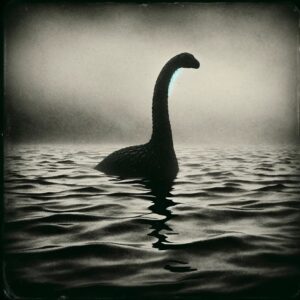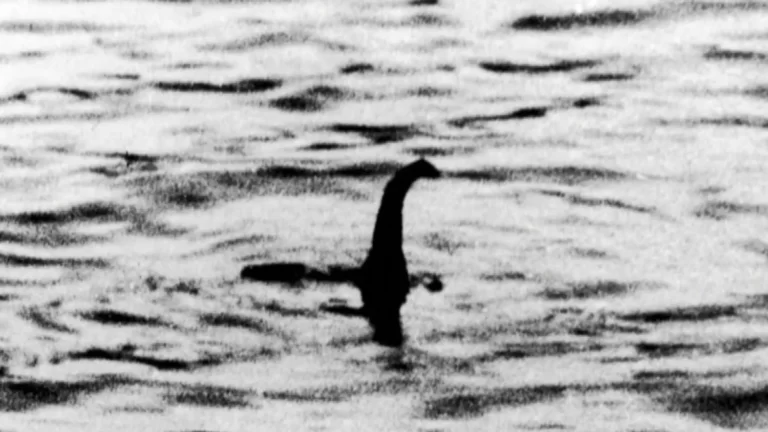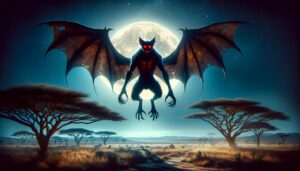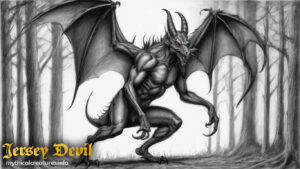Table of Contents
The Loch Ness Monster, often referred to as “Nessie,” is one of the world’s most famous mythical creatures, captivating the imaginations of people for generations. Nestled in the scenic splendor of the Scottish Highlands, Loch Ness has been shrouded in mystery, and its elusive inhabitant continues to inspire awe and fascination. In this comprehensive article, we will delve into the origins, appearance, abilities, myths, and stories surrounding the Loch Ness Monster, aiming to shed light on this enigmatic legend.
Origins
The legend of the Loch Ness Monster finds its roots in ancient Scottish folklore, with tales of water-dwelling creatures dating back centuries. However, it wasn’t until the 20th century that Nessie gained international recognition, thanks to a series of reported sightings and photographs that sparked global interest.
Appearance

Descriptions of the Loch Ness Monster’s appearance have varied widely over the years. Witnesses have described Nessie as a long, serpentine creature with a humped back, resembling a plesiosaur, an extinct marine reptile. The coloration is said to be dark, often described as green or black. Its neck is perhaps the most distinctive feature, with reports suggesting a length of up to 30 feet or more. Despite numerous eyewitness accounts, concrete evidence of the creature’s physical attributes remains elusive.
Abilities
While the Loch Ness Monster’s abilities remain speculative, various theories have emerged over the years:
Invisibility: Some believe that Nessie possesses the ability to become invisible or blend seamlessly with its surroundings, allowing it to avoid detection.
Camouflage: Another theory suggests that the creature may have evolved to mimic aquatic plants or other natural features, making it exceptionally adept at hiding.
Deep Diving: Given the immense depth of Loch Ness (reaching over 700 feet), some speculate that Nessie may have the ability to dive to great depths, eluding human observers.
Longevity: Some myths propose that the Loch Ness Monster is an ancient, long-lived creature, possibly explaining how it has avoided capture or discovery for centuries.
Myths and Stories
First Sightings: The modern legend of Nessie began in 1933 when a couple claimed to have seen an enormous creature crossing the road in front of their car before disappearing into the Loch. Their account sparked widespread interest and subsequent sightings.
The Surgeon’s Photograph: Perhaps the most famous photograph of Nessie was taken in 1934 by Robert Kenneth Wilson, a surgeon. It depicted a neck and head emerging from the water, but controversy surrounds its authenticity. Many experts believe it to be a hoax.
Operation Deepscan: In 1987, a scientific expedition known as Operation Deepscan utilized sonar equipment to scan the depths of Loch Ness. The results were inconclusive, with some promising blips, but no definitive evidence of Nessie’s presence.
The Spicers’ Home Video: In 2007, Gordon Holmes captured a home video purportedly showing a large, unidentified creature swimming in Loch Ness. The footage reignited public interest in the creature, but skepticism remains.
The Surgeon’s Photograph Revealed: In 2010, researchers concluded that the famous 1934 photograph was indeed a hoax. The “monster” was likely a toy submarine with a crafted neck and head.
Ongoing Sightings: Despite the passage of time and debunked photographs, sightings of Nessie continue to this day, with tourists and locals occasionally reporting encounters with the elusive creature.
The Scientific Perspective

While Nessie remains a symbol of mystery and intrigue, the scientific community generally dismisses the Loch Ness Monster as a flesh-and-blood creature. They argue that the Loch’s cold, murky waters are inhospitable to large reptiles like plesiosaurs, which went extinct millions of years ago. Instead, they suggest that many reported sightings can be attributed to floating logs, waves, birds, or misidentifications of other aquatic creatures.
There is a connection between the Loch Ness Monster (Nessie) and “globsters,” which are organic masses that wash up on beaches and are often initially mistaken for sea monsters or cryptids. Both Nessie and globsters are examples of mysterious and often unexplained phenomena associated with bodies of water. While Nessie is a legendary creature said to reside in Loch Ness, Scotland, globsters are typically large, decomposed masses of organic material, such as whales or other marine creatures, that occasionally wash ashore, sparking curiosity and speculation. In both cases, they can generate public fascination and media attention due to their unusual and enigmatic nature.
FAQ
What is the Loch Ness Monster?
The Loch Ness Monster, or Nessie, is a legendary creature said to inhabit Loch Ness in Scotland.
What does Nessie look like?
Nessie is often described as a long-necked, serpentine creature with a humped back.
Is the Loch Ness Monster real?
Its existence remains unverified, and many consider it a legend or cryptid.
Are there any credible sightings?
Sightings are reported, but concrete evidence is lacking.
What's the origin of the Loch Ness Monster legend?
It dates back to ancient Scottish folklore but gained modern fame in the early 20th century.
What's the most famous Loch Ness Monster photo?
The "Surgeon's Photograph" from 1934, which is now widely considered a hoax.
What scientific explanations exist?
Some suggest sightings may be misidentifications, logs, or other natural phenomena.
Is Loch Ness a popular tourist destination?
Yes, Loch Ness attracts tourists hoping to catch a glimpse of Nessie.
Has there been any recent evidence?
Sightings and investigations continue, but no conclusive evidence has emerged.
What role does the Loch Ness Monster play in pop culture?
It has inspired numerous books, movies, and folklore, making it an iconic figure in popular culture.




